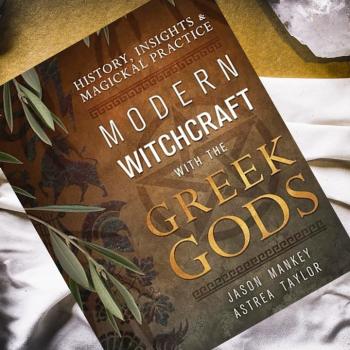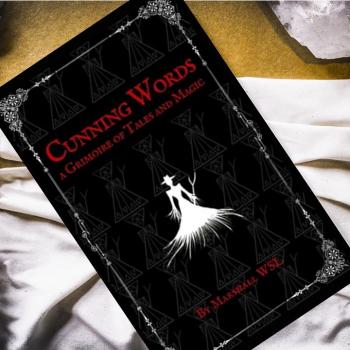
What can a naturalist celebrate in January?
This post is part of Naturalistic Traditions, a column exploring naturalism in Pagan ways. This column will cover seasonal celebrations, historical and contemporary movements, and ritual practices.
Natural Cycles
For places in the northern hemisphere with four seasons, winter has taken hold and the claws of cold grip the land. However, following last month’s solstice, the sun is already returning and the days are getting longer.
As for lunar cycles, the 11th will see a new moon, with a full moon on the 27th.
Civic and Scientific Traditions
 Carl Sagan’s Cosmic Calendar (illustrated as a comic strip here), which maps the entire history of our cosmos onto a single year, begins anew with January 1st. The first second of the first day of the new year corresponds to the Big Bang, 13.7 billion years ago. Thereafter, the infant universe undergoes a billions of years-long phase of development. The next major event on the calendar, the formation of our Milky Way galaxy, will not arrive till May. For an exciting presentation of Big History starting with the Big Bang and continuing to the present day, check out David Christian’s TED Talk.
Carl Sagan’s Cosmic Calendar (illustrated as a comic strip here), which maps the entire history of our cosmos onto a single year, begins anew with January 1st. The first second of the first day of the new year corresponds to the Big Bang, 13.7 billion years ago. Thereafter, the infant universe undergoes a billions of years-long phase of development. The next major event on the calendar, the formation of our Milky Way galaxy, will not arrive till May. For an exciting presentation of Big History starting with the Big Bang and continuing to the present day, check out David Christian’s TED Talk.
 In the U.S., Martin Luther King, Jr. Day is celebrated on the third Monday in January, which is the 21st this year.
In the U.S., Martin Luther King, Jr. Day is celebrated on the third Monday in January, which is the 21st this year.
King was the chief spokesman for nonviolent activism in the civil rights movement, which successfully protested racial discrimination in federal and state law. The campaign for a federal holiday in King’s honor began soon after his assassination in 1968. Ronald Reagan signed the holiday into law in 1983, and it was first observed on January 20, 1986. At first, some states resisted observing the holiday as such, giving it alternative names or combining it with other holidays. It was officially observed in all 50 states for the first time in 2000. (Wikipedia)
Some states observe MLK Day as a day of service, taking the opportunity for charitable and humanitarian action.
 Paul Harrison’s Elements of Pantheism observes January 22nd as the day Chief Seattle (Si’ahl) surrendered native land. This tragic memorial gains poignancy from the bittersweet speech delivered by the chief a year earlier. Controversy rages over the authenticity of the speech and its translations, but it remains one of the most well-known and admired pleas for Native American rights and environmentalist values. Harrison quotes Seattle:
Paul Harrison’s Elements of Pantheism observes January 22nd as the day Chief Seattle (Si’ahl) surrendered native land. This tragic memorial gains poignancy from the bittersweet speech delivered by the chief a year earlier. Controversy rages over the authenticity of the speech and its translations, but it remains one of the most well-known and admired pleas for Native American rights and environmentalist values. Harrison quotes Seattle:
“Every part of this soil is sacred in the estimation of my people.”
About the author
B. T. Newberg has been practicing meditation and ritual from a naturalistic perspective since 2000. After experimenting with Agnosticism, Buddhism, Contemporary Paganism, and Spiritual Humanism, he currently combines the latter two into a dynamic path embracing both science and myth. He is the editor of a community blog for naturalistic spirituality called Humanistic Paganism, which just published an anthology called Year One with over a dozen contributing authors. After growing up in Minnesota, and living in England, Malaysia, and Japan, B. T. Newberg currently resides in South Korea with his wife and cat.














